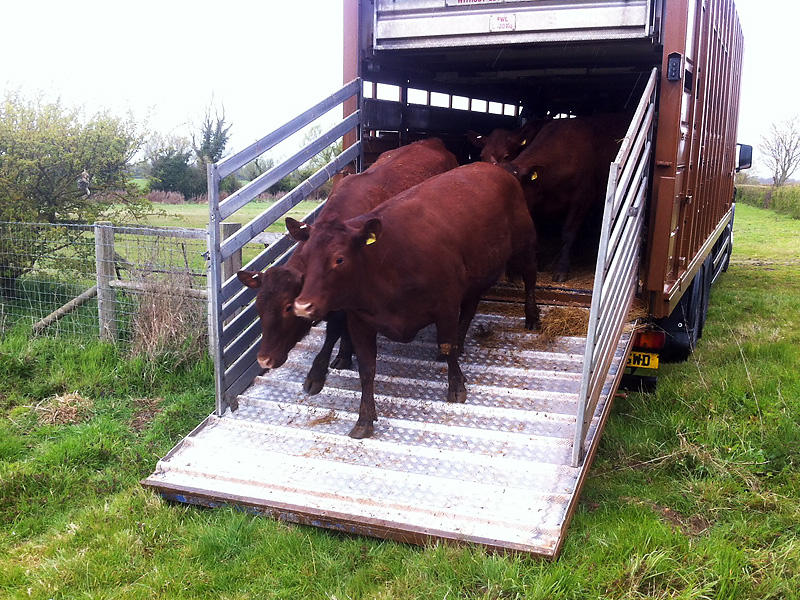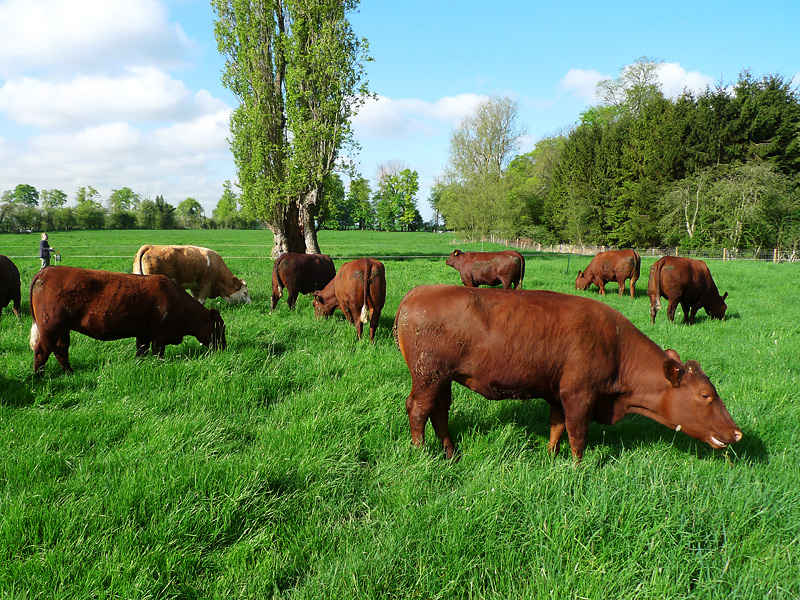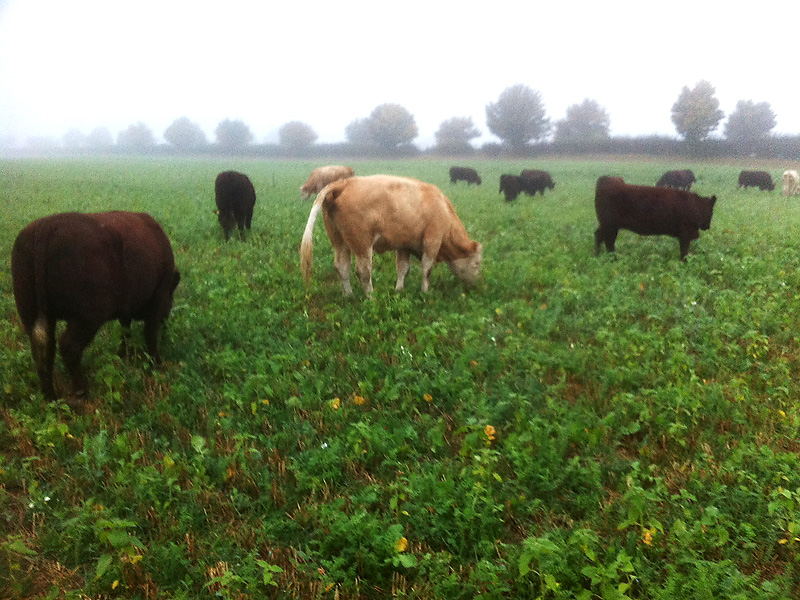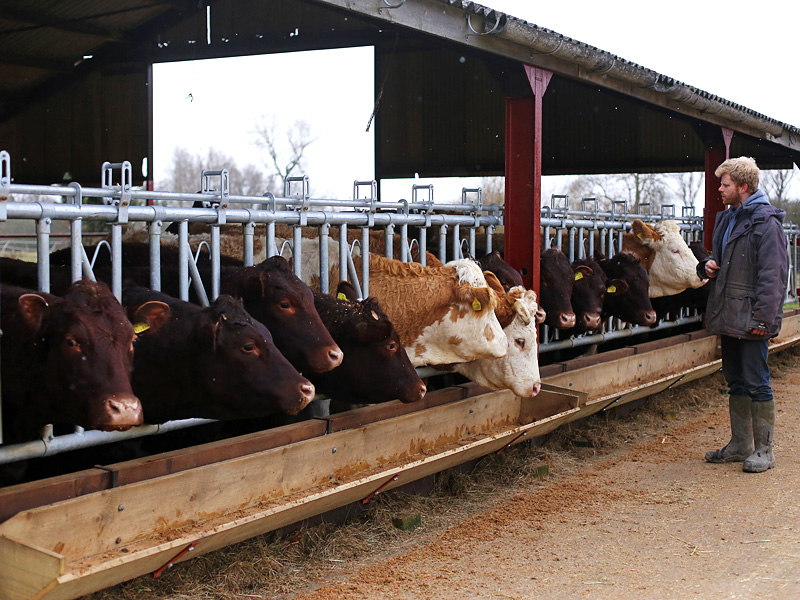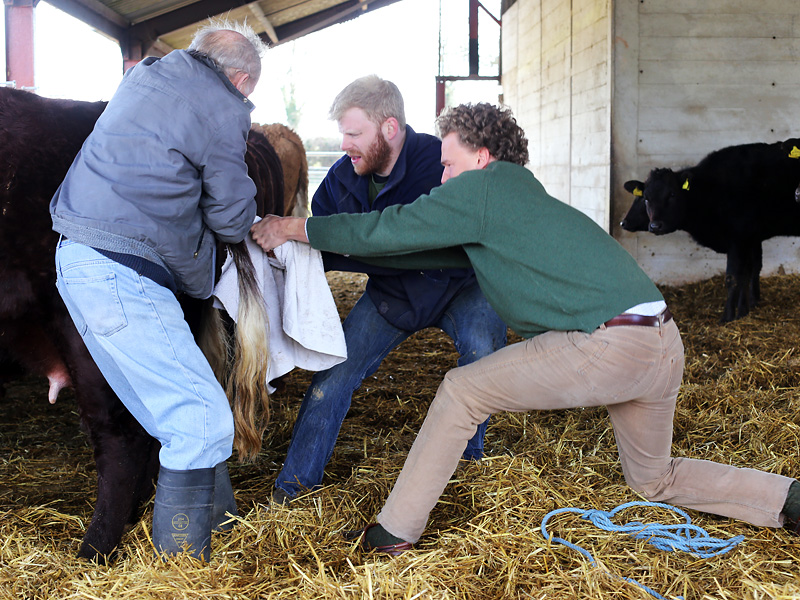So it’s now early 2012, and I have three fullbood Wagyu on the ground – smooth sailing. Obviously at this point the thing to do is scale up a bit. It is at this point that people started asking me “What are your plans for these animals? Where are you going to sell them? etc etc”. I didn’t have a good answer then, and I still don’t today. Ask again in a few years perhaps. Anyway, I digress.
I phoned up the Simmental breeder, but it was a little late in the spring, and most of her heifers had been sold already. On top of this they are a little expensive, around £1400 each if I recall correctly. The next port of call was the British Farming Forum, where I posted a request for a dozen heifers from a closed herd, breed [relatively] unimportant. This raised a few eyebrows – who wants to buy a heifer but doesn’t care what breed it is? Nonetheless, my call was answered and a couple of months later a truck turned up at the farm.
Having pedigree animals is a side effect of only buying from closed herds, but these were a sensible price, so not a problem. On the same subject, as well as coming from closed herds, I always get new animals tested for BVD, Lepto & Johnnes before they arrive. The last thing I want is to pick up some chronic disease that gets my whole herd – however small it may be.
Sussex are known for being a fairly placid breed, but these ones had spent most of their life wandering around Romney Marsh, not seeing people from one day to the next. To begin with, they were decidedly unimpressed with being put through a crush; one in particular sticks in my memory for the time it tried to get out of the crush, not by going backwards or forwards, but by going up.
I had a bit of a problem at this point. There were 15 animals ready to go through an embryo transfer program, but I only had two embryos in the tank. Over-planning has never been a problem for me in this venture. I spoke to Ralph at Crescent Harbor, who had sold me the first batch, and he was just about to do a flush for some new embryos. We agreed another deal, and I set the program going as I was keen to have these calves before the cattle were turned out in spring 2013. Unfortunately, it turned out that embryos created in the US must wait 30 days before they can become eligible for export to the EU – and this took them past the date I needed them by. Missing this date would not only mean I had wasted money on drugs & vets, but we would be getting into harvest before I could do it again. Luckily I had previously been speaking with Tom Seitz at Savery Creek, a Wagyu breeder from Wyoming. Incredibly, he managed to get the deal turned around and shipped with FedEx in less than a fortnight. The timing was still very tight, and I was worried that the delivery might go astray, so I called to ask if it was possible for me to pick up the canister directly from the FedEx warehouse at Stansted airport. The official answer is that this is possible in only one circumstance – medical emergencies. I never lied, but when the man at Stansted saw on his paperwork that I wanted to pick up a tank of liquid nitrogen containing embryos, he must have assumed that I met the criteria. I received a phone call at around midnight one evening telling me that the tank had cleared customs, and I drove down straight away to pick it up. Two days late we implanted twelve embryos, sired by some of the top bulls available; Takazakura, Kitaguni Jr, Haruki II, Michifuku & Shigeshigetani. By this point it was mid July, and we started harvest a few days later.
October soon came around, and there was again time to muck about with cattle. Bob Brittain came out and did a PD (pregnancy check) and any that weren’t pregnant got started on another embryo transfer program. The result was seven pregnancies from twelve embryos; 58% is perfectly acceptable so I was happy. A couple of weeks later we implanted another 5 embryos, and then moved them all out to graze on what was at the time a very novel experiment for us, a cover crop.
It was at around this point I applied for a Nuffield Scholarship, with my proposed topic being the potential for Wagyu cattle in the UK. I was turned down flat, not even an interview. I was subsequently told that it appeared to be only a rich man’s hobby, not a serious proposition. Perhaps they were right.
The cover crop gave me six weeks extra grazing, which was lucky as I had not yet installed the locking feed barriers in my winter housing. These barriers really save me so much time, I wouldn’t be without them now. Pushing animals into crushes is so last century, it’s just a shame I still have to do it…
By this point I was very enthusiastic on the whole situation, so I called up the friendly farmer in Sussex with an idea. He would set aside 15 heifers for me, and I would implant the embryos whilst they were still on his farm. I would then buy any animals that were successful, and at the same time sell any of mine that were not also pregnant. An ideal situation for me as it cut out a lot of the hassle. So in March 2013 we implanted thirteen embryos on his farm, and four on ours.
In the meantime it was calving. The first needed a helping hand, but turned out fine. She is named after my friend who happened to be passing by, and kindly stepped in. The second was a bull calf, which was just what I had been hoping. He has a particularly excellent pedigree, and I wanted to keep him as my herd’s first bull. But a problem now became apparent. I was expecting five more calves, but it was obvious that only three more heifers were getting ready to calve. The next calf was a heifer, and then two more bulls, who were destined to become steers. But no sign of the others. At some point between being PDed at three months, and coming inside at six months, two pregnancies had disappeared. This was pretty hard to stomach after all I had gone through, and it remains a mystery to this day.
But better was to come. Of the seventeen embryos implanted in March, it turned out that fourteen had failed. Three at our farm, and eleven in Sussex. Sometimes I liken embryo transfer to smoking £50 notes, and this was hot-boxing a briefcase full.
But I couldn’t stop now. I had already planned a trip to the US that left in a few weeks, to visit a load of guys working in different parts of the Wagyu industry. Nuffield didn’t give me a scholarship, but there were still lots of things I needed to know. Even if I was very ambivalent towards the whole project at the time, my tickets were booked.

